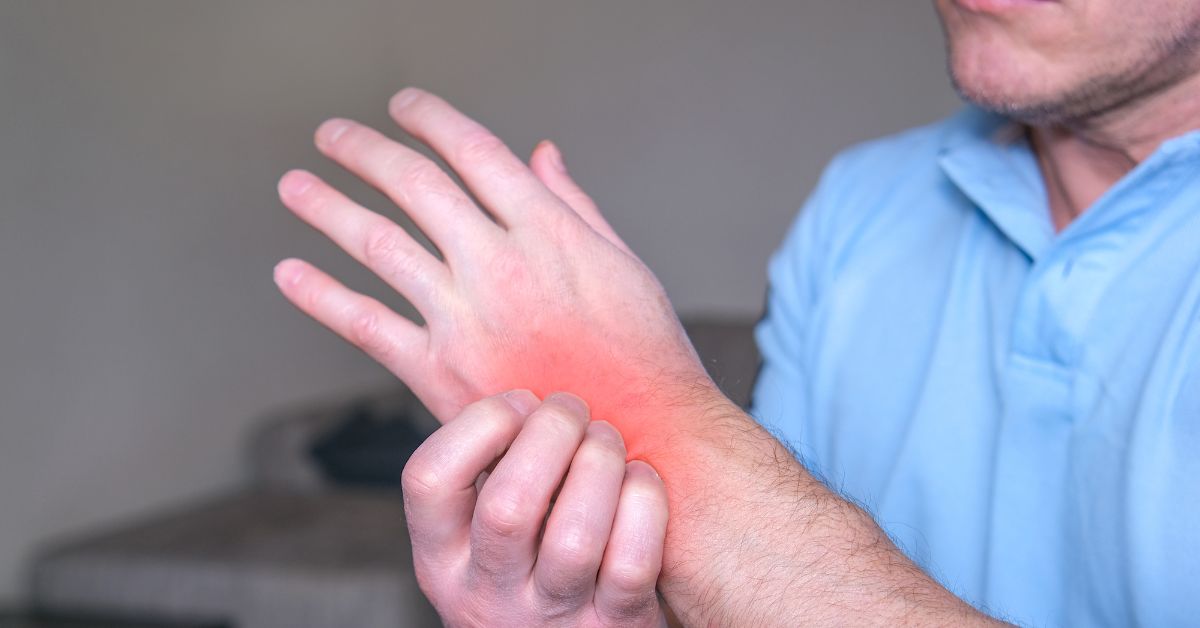

Sitting with crossed legs for too long or sleeping with one arm crooked under the head for a prolonged time may cause a sensation of burning, tingling, itching, and prickling. It usually occurs in extremities, such as hands, feet, fingers, and toes. It is known as paresthesia, also known as pins-and-needles. The sensation develops suddenly without causing any pain.
This blog will help you understand paresthesia, its causes, symptoms, and various treatment options. Read the blog to know more.
As mentioned earlier, paresthesia is when a person experiences a burning or prickling sensation that develops primarily in the hands, arms, legs, and feet. However, it can occur in any other body part as well. The sensation happens without warning and is typically described by many as tingling or numbness, skin crawling, or itching.
Paresthesia occurs when continuous pressure is applied to a nerve, and the feeling reduces or goes away as soon as the pressure is relieved. But if a person experiences chronic or prolonged paresthesia, it may be a sign of an underlying neurological disease or traumatic nerve damage. The condition can also occur due to disorders that affect the central nervous system, including stroke, transient ischemic attacks , multiple sclerosis, transverse myelitis, and encephalitis.
Paresthesia commonly affects the hands, arms, legs, and feet but can affect other body parts. The following are the symptoms of paresthesia:
If a person is experiencing chronic paresthesia, it may cause stabbing pain that may result in difficulty walking and clumsiness in the affected feet or legs.
If the symptoms of paresthesia continue and affect the quality of life, it can be a sign of an underlying medical condition that requires treatment. Also, if a person experiences additional symptoms such as the following:
Paresthesia typically occurs when pressure is applied to a nerve, and the symptoms disappear when the pressure is relieved. It is called temporary paresthesia. The cause of temporary paresthesia may be a lack of blood flow, and sometime the reason may be unknown. However, in some instances, the pins-and-needles sensation does not go away and remains; it is known as chronic paresthesia.
Chronic paresthesia may be an indication of nerve damage. There are two types of nerve damage – radiculopathy and neuropathy.
When radiculopathy affects the lower back, it is known as lumbar radiculopathy. It causes paresthesia in the leg and foot. In extreme cases, compression of the sciatic nerve – the large nerve that begins in the lower spinal cord – may cause leg weakness.
On the other hand, when the nerves that provide sensation and strength to the arm get affected it is known as cervical radiculopathy. In cervical radiculopathy, a patient may experience the following:
Any individual can develop temporary paresthesia. But, as a person ages, the risk of experiencing chronic paresthesia may be high. People who:
In some instances, the following medicines can also induce paresthesia:
It is important to note that if medication is the root cause of paresthesia, adjusting the medication doses or changing the medication may relieve the symptoms.
The treatment for paresthesia depends on the cause. It may go away on its own if it is temporary paresthesia. But chronic paresthesia needs medical attention. Suppose a patient has an injury due to repetitive movements; lifestyle changes and physical therapy may help solve the issue.
Paresthesia is a sensation of numbness, tingling, itching, and burning that a person experiences when sitting for a long time or sleeping with an arm under the head for a prolonged time. Although experiencing paresthesia doesn’t need to create a cause for concern, chronic paresthesia may indicate an underlying medical condition.
Yes, paresthesia is one of the symptoms of multiple sclerosis.
In most cases, paresthesia goes away once the nerve is relieved. But chronic paresthesia needs medical attention. The doctor may take down medical history, conduct physical exams, and prescribe the following tests:
The following are some of the steps to prevent neurological and orthopaedic conditions that may result in paresthesia:
Our expert general medicine specialists verify the clinical accuracy of the content to deliver the most trusted source of information, making the management of health an empowering experience.
